
Although modest in size, Hungary, one of our 10 budget destinations in Europe, offers a remarkable diversity of landscapes, with low-lying mountains in the north-west, a vast plain in the east, the majestic Danube, as well as rivers and lakes, including the vast Lake Balaton, the largest in Central Europe, which is very popular when the weather's fine. Add to this towns and villages steeped in a rich historical heritage, starting with the capital Budapest and the vestiges of Ottoman and especially Austrian domination. With the added bonus of excellent local specialities when it's time to sit down to dinner, Hungary has it all. Here's a small selection of our not-to-be-missed visits to one of our 10 European destinations to visit this winter.
1. Buda Castle Palace

Before the 13th century, Buda hill was devoid of inhabitants. However, following a surprise attack by the Mongols, King Béla IV ordered the construction of a castle between 1247 and 1265 to shelter the remaining population behind its walls. Today, nothing remains of this Gothic edifice, which has been altered several times. During the winter of 1944-1945, the castle served as a last refuge for German troops and was targeted by Soviet cannons, resulting in a fire that destroyed much of the castle's interior. When it was decided to rebuild, the choice was made for a reconstruction faithful to the castle's pre-World War II appearance. Today, the castle houses two renowned museums: the National Gallery and the Budapest History Museum. Click here to book your walking tour of the Buda Castle district!
2. What to do in Hungary Lake Balaton
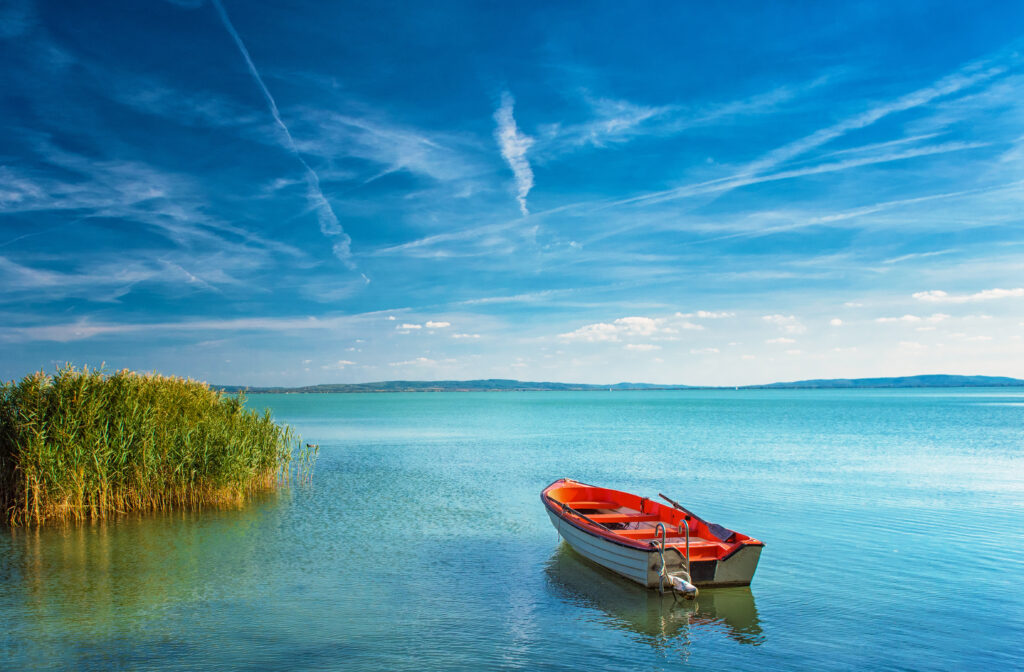
Lake Balaton, Europe's largest freshwater lake, is obviously the country's most popular summer destination. Its shallow depth allows the water to warm up quickly in summer. The north shore, with its steep, wild hills, offers landscapes of remarkable beauty. Emblematic sites such as the town of Keszthely and its famous Festetics palace, the extraordinary Hévíz thermal lake, the Tihany peninsula and the Badascony hillsides, which have been producing wine since Roman times two thousand years ago, are waiting to be discovered. The southern shore is flatter, with numerous beaches, family resorts and campsites. Discover the beauty of Central Europe's largest freshwater lake by booking this 10-hour excursion to Lake Balaton from Budapest.
3. The Parliament
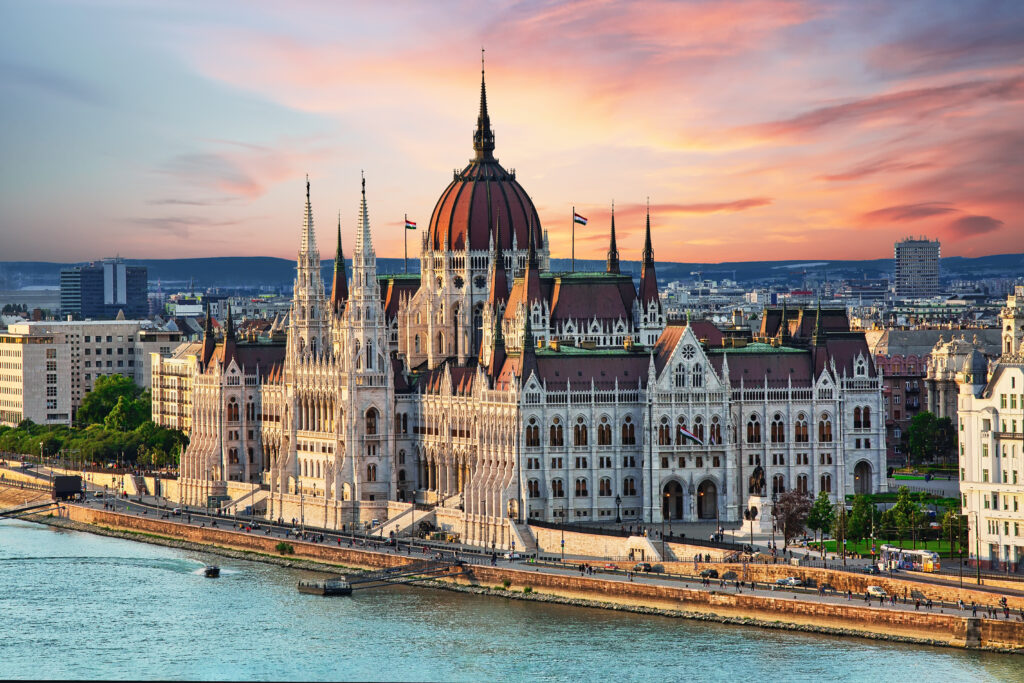
Built at the turn of the 19th century as the culmination of the rapid urban expansion of Budapest, one of our destinations to visit in October 2024, the Hungarian Parliament building was the result of a public competition between the best architects of the time. Inspired by the British Parliament at Westminster, the Hungarian Parliament, also known as the Országház, still houses parliamentarians in the lower chamber, the upper chamber having been abolished. Its architecture is a synthesis of Baroque, neo-Renaissance and neo-Gothic, representing a dazzling example of Budapest eclecticism with its pinnacles, belfries and spires. Built between 1885 and 1902 to the designs of Imre Steindl, the Parliament contains almost 700 rooms, 20 km of staircases and 40 kg of gold. At 265 m long and 96 m high, it remains the country's largest building. Since 2000, it has housed all the royal emblems of Hungary, including the crown, the scepter, the apple of the kingdom and the sword. The Parliament's interior is richly decorated, and guided tours are available.
4. What to do in Hungary Visit Pécs

Embodying the crossroads of Eastern and Western civilizations, Pécs stands out for its artistic and cultural character, thanks to its multitude of museums and universities. Despite the passing centuries, peaceful cohabitation between the Swabian, Serbian and Croatian minorities persists in this city. Steeped in history, Pécs remains Hungary's most Turkish city. Its history goes back more than two millennia, bearing witness to the vestiges of the Roman Empire when Pécs was the center of the province of Sopianae. Viticulture, introduced during the reign of Marcus Aurelius, flourished on the slopes of the Mecsek Mountains overlooking the city, producing the renowned Pécs sparkling wine. The 15th-century underground passages housea necropolis listed as a UNESCO World Heritage Site. Having become an ecclesiastical center under King Szent István, Pécs was home to Hungary's first university, founded in 1367 and named after the local poet Janus Pannonius.
5. Budapest thermal baths

The thermal baths of Budapest, a cultural and trendy destination, are much more than just a place for relaxation and therapy; they represent a true art of living, a playground and a fantastic architectural heritage. Unlike aseptic spas, these baths are dynamic spaces with often flamboyant architecture, much appreciated by Hungarians. From Roman times to the Magyars of the Belle Époque, the various occupants of Budapest have exploited an exceptional asset: underground thermal springs. The Ottoman Turks built numerous baths in the 16th century, including the Rudas, Király and Veli Bej baths, which are still in use today. At the end of the 19th century, under the Austro-Hungarian Empire, the fame of the baths spread beyond the borders, attracting large numbers of European and even American tourists to enjoy their curative virtues. Today, more than a dozen are open to the public in the Hungarian capital.
Relax at Széchenyi, Budapest's most famous spa, by by booking your your entry!
6. The Great Synagogue of Budapest
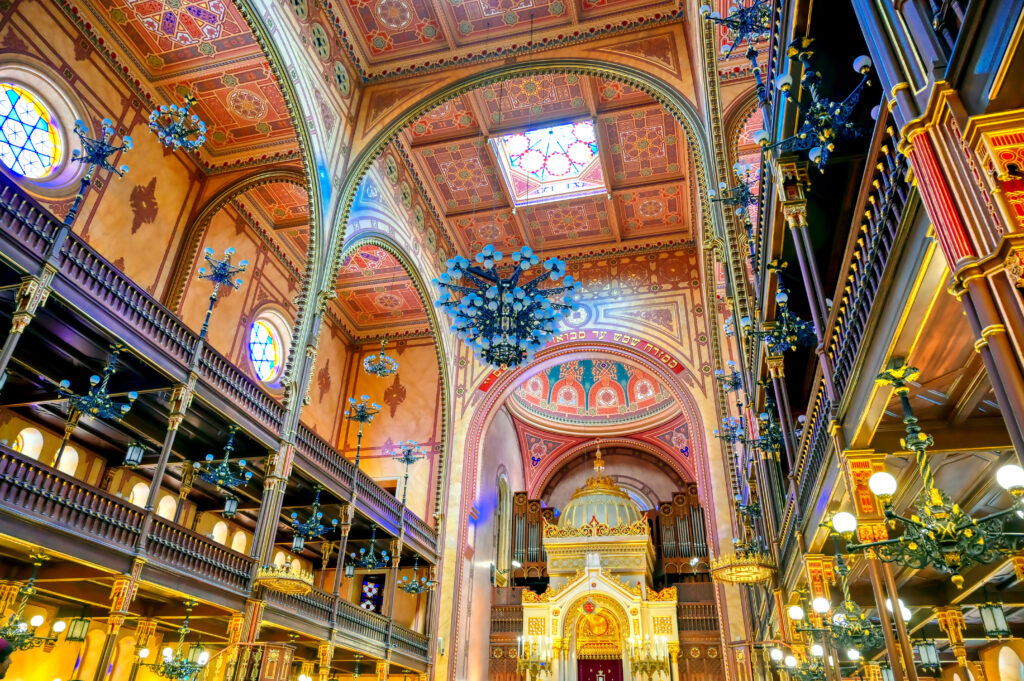
The Great Synagogue of Budapest, one of our 15 must-visit capitals in the world, is the second largest in the world after New York. It was built between 1854 and 1859 according to plans by Ludwig Förster, a Viennese architect, while the interior decoration was entrusted to Frigyes Feszl, his rival. Commissioned by the Neologue Jews of Budapest, the synagogue can accommodate over 3,000 worshippers, testifying to the size of the pre-war Jewish community, which at the time represented almost 25% of Budapest's population. The main architect's Moorish design was inspired by Spain's Alhambra and North Africa, with its two outer bulbs almost resembling minarets. Click here to book your ticket to the Great Synagogue of Budapest and avoid the wait at the entrance to this must-see monument.
7. What to do in Hungary Fresh air in Hortobágy National Park
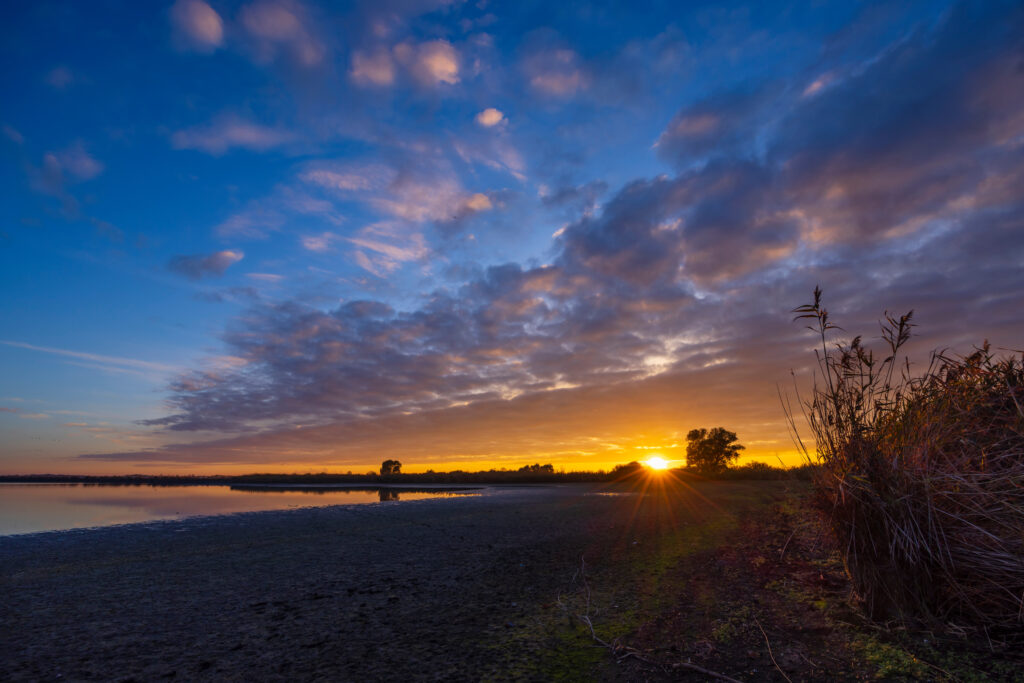
Hortobágy National Park, established as a protected reserve in 1973, covers an area of 630 km². In the endless expanse of this great steppe, the largest in Central Europe, fields that are arid in summer and muddy in winter stretch as far as the Carpathian Mountains. In contrast to the rich wheat fields and acacia-lined roads of the Great Plain to the west, Hortobágy is characterized by meagre pastures on arid soil. The modest hamlets scattered across this vast plain feature reed-roofed houses, whitewashed inside and out, often accompanied by the famous pendulum well. Today, the pastures are used for pastoralism, with the traditional breeding of horses and grey oxen. During the hottest periods of the summer, heat mirages can be observed. This semi-desert plain is home to a rich variety of birds, including black and white terns and storks, making it an important bird reserve.
8. Gödöllo Castle
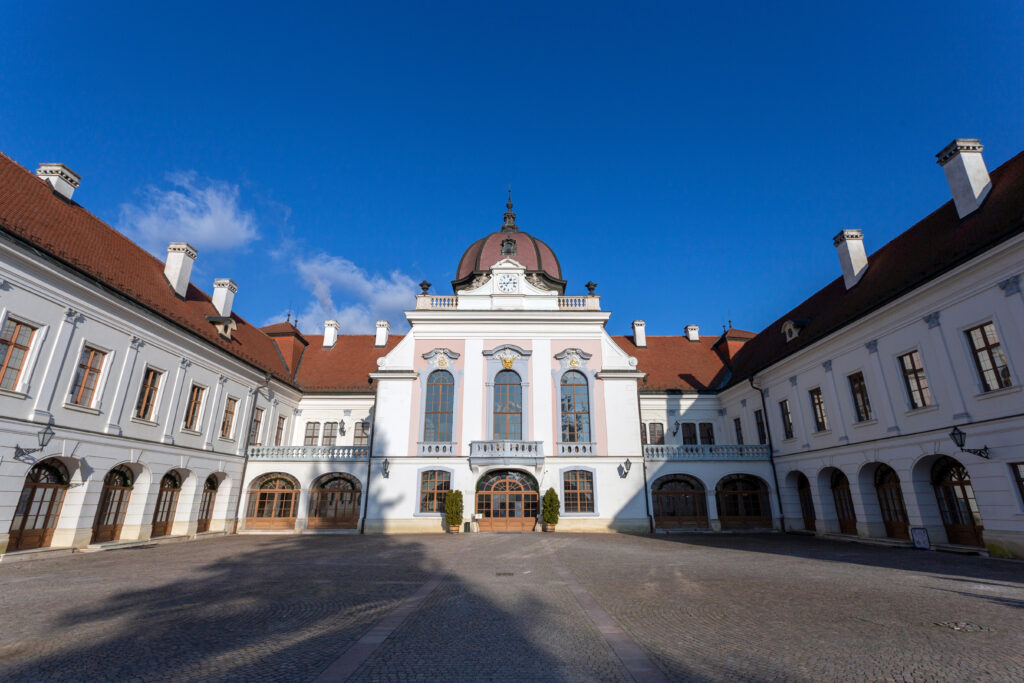
It wasn't until 1733 that Count Antoine I Grassalkovich, one of Hungary's greatest lords, launched the construction of the castle. In the 19th century, the castle became Empress Sissi's favorite royal residence. She spent more time here than in Vienna. After the collapse of the Austro-Hungarian Empire in 1918, the castle became the summer residence of Hungarian regent Miklós Horthy. The Second World War brought this period to an end, and from 1950 onwards the castle was used by Soviet groups. A first phase of renovation then opened the magnificent main hall and royal apartments to the public click here to book your visit to the Royal Palace of Gödöllő from Budapest!
9. What to do in Hungary Discover the village-museum of Hollókő

Hollókő has been a UNESCO World Heritage village museum since 1987. The museum preserves the entire old village (Ó falu), made up of 55 small, preserved traditional houses arranged around the modest church. Restored as it was in 1909 before the last fire, most of the houses are still inhabited today. Once famous for its 13th-century Szárhegy fortress, which stands on a steeply-sloping hill (although it is now only in ruins), Hollókő is steeped in a folklore unique to Central Europe, preserved by its 450 inhabitants. Young women here wear flowery fabric skirts, trimmed with multiple petticoats, while men sport more sober costumes, consisting of a linen shirt under a tight vest, high boots and a round hat.
10. The vineyards of Tokaj

Tokaj, a modest village in northern Hungary, is renowned for its exceptional vineyards. At the confluence of the Bodrog and Tisza rivers, at the foot of Mount Nagykopasz, it offers a picturesque setting. The main square is adorned with a "wine well", topped by a statue of Bacchus, just opposite the famous Rákóczi winery. Its underground corridors, covered with a thick layer of mold, stretch for 1.5 km and house the Pincemúzeum, where the history of Tokaj aszú, an exceptional wine produced for centuries, is told. Dubbed "the king of wines, the wine of kings" by Louis XIV, this wine reached its peak between the 16th and 18th centuries. Its fame has given rise to similar appellations around the world, notably Tokaj from Alsace.
Discover Tokaj, Hungary's most famous wine region, by booking this tour of a family-run vineyard, where you'll visit the winery and enjoy a wine tasting.
11. What to do in Hungary Admire the view from the Chain Bridge

The Lánchíd, Budapest's first permanent bridge, was built on the initiative of Count István Széchenyi. Work, under the direction of Scottish engineer Adam Clark, took place between 1842 and 1849. Previously, crossings of the Danube had been made on ice in winter and on floating bridges or by boat in summer... At the time, the construction of this bridge symbolized a first step towards the unification of Buda and Pest, a cause to which Count István Széchenyi was strongly attached. Destroyed during the Second World War, the bridge was rebuilt identically in 1949. Beautifully lit at night, it also offers an exceptional view of the Danube and the Hungarian capital.
12. Visegrád Castle

Located 45 kilometers north of Budapest, Visegrád is a small town relatively untouched by tourism, which reached its zenith during the reign of King Mátyás, an eminent figure of the Hungarian Middle Ages. The remains of the castle, the oldest in the Danube Loop region, are imposing and superb. Standing on a 350-metre rocky spur, the castle (Felégvár) offers a breathtaking view of the magnificent meander of the Danube River. Sightseeing in the town is divided between the Upper Town and the Lower Town (a 40-minute walk, cab or bus ride away). Visegrád's restaurants and hotels are concentrated in the lower town.
13. Fisherman's Bastion

During the Middle Ages, a fortified section of Budapest was controlled by fishermen. It was known as the Fishermen's Bastion. Built between 1899 and 1905 in neo-Gothic style to celebrate the Millennium, this delicate white wall with seven towers had no military function. Today, from the Bastion des Pêcheurs, you can enjoy a spectacular panorama of the capital and find cafés and good restaurants for a little gourmet break during your day of sightseeing. Please note that admission to the Bastion is not free during the day and in high season.
14. What to do in Hungary Visit Eger

Eger is a veritable "Baroque pearl", combining Gothic monuments with magnificent 18th- and 19th-century buildings in the Rococo, Neoclassical and Zopf styles. Its picturesque lanes and squares invite you to stroll through vestiges steeped in history. The town is centered around its ancient fortress, witness to the decisive victory over the Turks in the 16th century, which once housed a thermal bath. The seat of the bishopric, then the archbishopric, Eger has been a religious center for over a thousand years, where monastic orders have played an important role in (renowned) wine production. These wines are aged in the cellars of the Szépasszonyvölgy (Valley of Beautiful Women), where a network of medieval cellars carved out of volcanic rock stretches for 140 km. In addition to the wine tasting offered in these cellars, the valley is also home to some beautiful rustic inns.
15. Taste Hungarian gastronomy

In a good Eastern European country, charcuterie, goulash (and other dishes in sauce), pancakes and pastries feature prominently on restaurant menus. These are all representatives of a cuisine that borrows from the various communities historically present on Hungarian soil. This cuisine is first and foremost an "open-air" cuisine, served out of a cauldron (bogrács) that has been simmering over a wood fire. Hungary also boasts some unique animal breeds, such as mangalica pork and grey beef (magyar szürkemarha), which have been brought back into the limelight by the chefs of the new Hungarian culinary wave. One thing's for sure: while there are some excellent specialties in Hungary, they're not the lightest! Budapest is one of the top 10 party cities in Europe, and even one of the best destinations for an EVG in Europe!
How to visit Hungary in 7 days?
Days 1 to 3. Budapest, from which we've selected the 20 must-sees, is the gateway for all travellers wishing to discover the Magyar Country. Here are just a few of the highlights you'll find on one of the world's oldest subways: Mathias Church, Buda Castle, Andrássy Boulevard and the Gellért and Rudas baths.
Days 4 and 5. We head for the Danube Bend and western Hungary. This region is one of the most beautiful on the Danube.
Days 6 and 7. End of your stay around Lake Balaton, Europe's largest lake. The Balaton well deserves its nickname of "Hungary's inland sea". It's renowned for its many spas.
How to visit Hungary in 10 days?
If you're staying an extra three days, you can add a detour to Győr and western Transdanubia to the previous itinerary, and extend the journey to Pécs, to enjoy the famous and superb vineyards of the south of the country.


